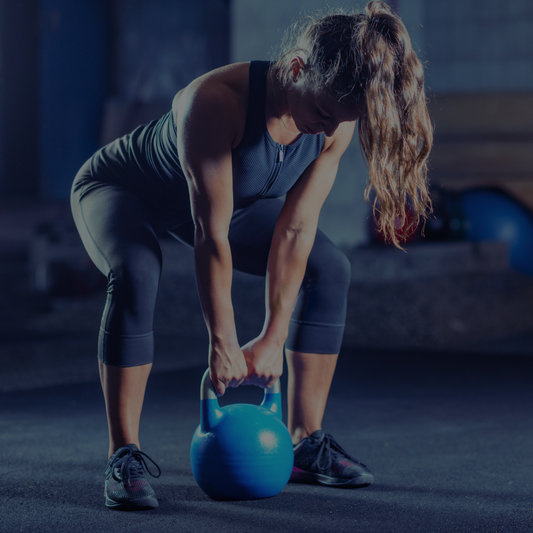How To Lose Fat Without Losing Muscle
Losing fat while preserving muscle mass is a common goal for many individuals striving to achieve a leaner and more defined physique. However, it can be challenging to strike the right balance between shedding excess fat and maintaining hard-earned muscle. Fortunately, with the right approach and strategies, it is possible to achieve your fat loss goals without sacrificing your muscle mass.
Firstly you have to understand the physiology behind it:
When you create a caloric deficit through diet and exercise, your body taps into its fat stores for energy - resulting in fat loss. However, without proper nutrition and correct exercise, your body may also start breaking down muscle tissue for fuel - leading to unwanted muscle loss.
To prevent this from happening, it is crucial to prioritize strength training and consume adequate protein to support muscle growth and repair. Additionally, incorporating cardiovascular exercise and optimizing your nutrition will help to accelerate fat loss while preserving lean muscle mass.
1: Resistance Training:
When you lift weights or perform bodyweight exercises, you create micro-tears in your muscle fibres. As your body repairs these tears, your muscles become stronger and more defined. Therefore, to maximize muscle growth and strength gains, it is crucial to follow the principles of progressive overload. This means gradually increasing the weight, reps, or sets of your exercises over time to continually challenge your muscles.
During resistance training exercises, there are two main phases: the concentric phase and the eccentric phase. The concentric phase is the lifting or shortening phase of the exercise, while the eccentric phase is the lowering or lengthening phase. For example, when you perform a bicep curl, the concentric phase occurs as you lift the weight and the eccentric occurs as you lower the weight back down to the starting position. The eccentric phase causes greater muscle damage compared to the concentric phase. This muscle damage triggers a series of biological responses within the muscle fibres (including the activation of satellite cells) which are responsible for muscle repair and growth. Therefore, emphasizing the eccentric phase of an exercise can lead to more significant muscle hypertrophy over time.
Aim to incorporate resistance training at least 2-3 times per week
2 - Mindful Eating:
Practising mindful eating can help you avoid overeating and make better food choices. Tune in to your body’s hunger and fullness cues to guide your eating habits, wherein you should eat only when you’re hungry and stop when you’re satisfied rather than relying on external cues or emotions to dictate your food intake. A tip to control mindless overeating is avoiding distractions such as screens or multitasking while you are eating. Also, practice portion control by using smaller plates and measuring serving sizes. Remember to choose whole and minimally processed foods over highly processed and refined options so that you can provide your body with the best nutrients it needs for optimal health and performance.
3- High-Intensity Interval Training (HIIT):
HIIT workouts are another effective way to shed fat while preserving muscle mass. It involves alternating between short bursts of high-intensity exercise and brief rest periods.
(High-intensity exercises could be anything from burpees to kettlebell swings).
This approach not only maximizes calorie burn during the workout but also increases your metabolic rate, subsequently leading to continued fat loss even after you have finished exercising.
Another form of HIIT is fartlek training which combines varying intensities of speed and terrain in endurance sports like running or cycling.
Before engaging in HIIT it is essential to warm up properly to prevent injury and prepare your body for the intensity of the workout. Adequate rest and recovery between HIIT sessions are crucial for allowing muscles to repair and adapt to the training stimulus. Beginners should start with lower-intensity intervals and gradually increase intensity and duration as fitness levels improve.
Our website allows you to access a library of strength training routines, HIIT workouts, and mobility exercises.
4 - Nutrition Optimization:
As you may have already heard, protein plays a key role in regard to muscle repair and growth, so do not overlook this fact and make sure to include a source of protein in each meal and snack. It is recommended to consume a serving of protein (20-30 grams) within 30 minutes to an hour after your workout. A post-workout meal or snack containing a 3:1 or 4:1 ratio of carbohydrates to protein is ideal. Additionally, prioritize nutrient-dense foods such as lean meats, fish, eggs, fruits, vegetables, whole grains, and healthy fats to provide essential vitamins, minerals, and antioxidants. With a balanced intake of macronutrients, (approximately 40-50% of calories from carbohydrates, 25-30% from protein, and 25-30% from fats, adjusted based on individual preferences and goals) you can expect to improve overall health and performance.
Lots of people overlook the importance of having carbohydrates in a healthy diet. They serve as the body’s primary source of energy particularly during high-intensity workouts. Try to include complex carbohydrates like whole grains, fruits, vegetables, and legumes to provide sustained energy as well as support glycogen replenishment.
Fat also plays a vital role in hormone production, nutrient absorption, and cellular function. Healthy fats come from sources such as avocados, nuts, seeds, olive oil, and fatty fish.
Tailor your nutrition plan to meet your individual goals, preferences, and dietary needs. Experiment with different foods and meal timing strategies to find what works best for you.
5 - Rest and Recovery:
Rest and recovery are essential components of any fitness program. Aim for 7-9 hours of quality sleep per night as sleep is crucial for hormone regulation and muscle recovery. To achieve a good quality sleep aim to create a conducive sleep environment. This could be factors like minimizing exposure to screens, keeping your bedroom cool and dark, and establishing a consistent sleep schedule. For active recovery, you can do activities such as walking, yoga, or foam rolling on your rest days. All of these activities will promote circulation, alleviate muscle soreness, and enhance recovery.
Pay attention to signs of fatigue, soreness, or decreased performance, as these may indicate the need for additional rest and recovery. If you start noticing any of these signs you should adjust your training intensity or duration accordingly to prevent overtraining.



